Artistgndphotography/Getty Images
Camila Pérez B
All things denim
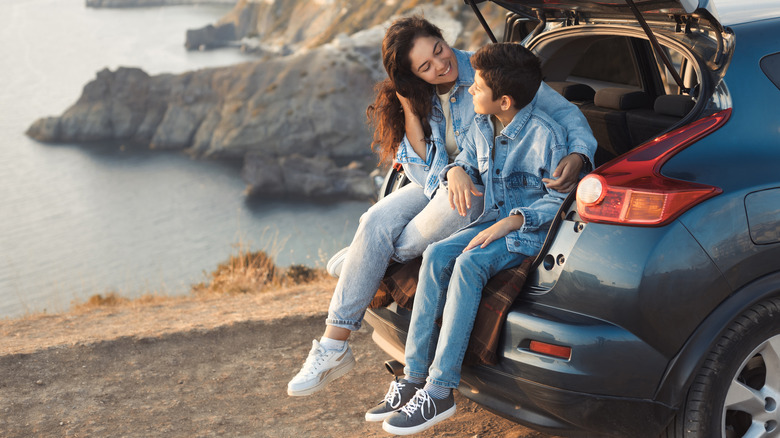
Let’s kick this list off with the basics. When it comes to maximizing comfort and breathability — especially during a warmer road trip — you really don’t want to be wearing denim anything. Whether it’s a pair of jeans, shorts, or a jacket, denim is notorious for being uncomfortable if you’re going to be sitting down for more than a couple of hours.
In most cases, the material itself is either too rigid or way too thick, which means you’ll probably start to feel your thighs sweltering through — especially when you choose to wear jeans. In other instances, denim just doesn’t fit that well. Whether the waistband is too tight or the inseam is too short, you’ll have a hard time sitting comfortably without it poking and pinching. All that goes to say… you’re probably going to want to leave your denim at home or packed away for when you arrive at your destination.
However, if you’re still dead set on wearing denim, make sure it’s at least worn-in and loose-fitting. As for denim jackets, they can be great layering pieces — just don’t expect them to be good makeshift pillows!
Impractical shoes
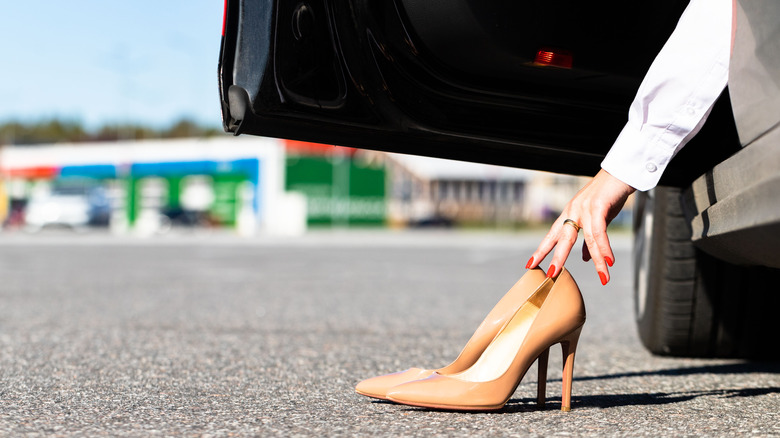
In terms of choosing the right footwear for your road trip, it all depends on whether you’re going to be doing some driving. If the answer is yes, there are a few choices you’ll want to stay away from. The first is flip-flops. This type of shoe can easily slide or slip off your feet as you move between pedals, making it a lot more difficult to maneuver the car, which can cause dangerous driving situations.
The second is high heels or wedges. Whereas flip flops can interfere with pedal control and delay your reaction, the heels or wedges can get lodged under the pedal as well as distort your depth perception — meaning you might end up applying more pressure than you expect to the accelerator or the brake.
According to recent reports, nearly 16,000 car accidents happen each year because of pedal errors. In order to avoid putting yourself and your passengers at risk, you’ll ideally want to wear comfortable shoes that fit securely and allow precise pedal control. For example, sneakers and flat-sole shoes are both great, safe options.
Harsh fabrics
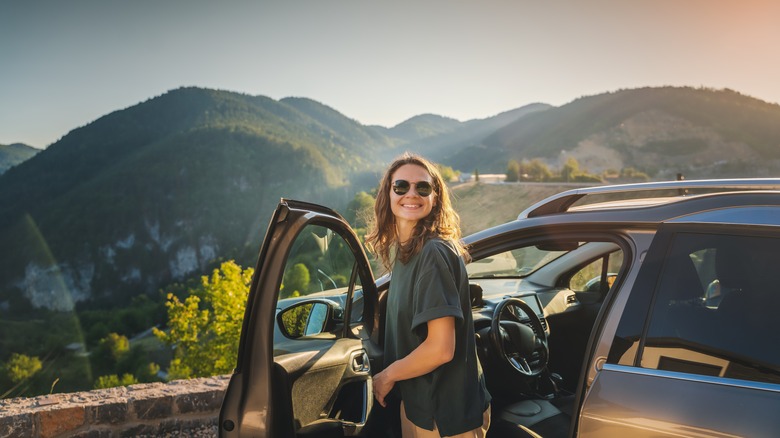
Olezzo/Shutterstock
Itchy fabrics like wool, polyester, and certain synthetic blends can turn any road trip into a restless journey plagued by itches, rashes, and hot flashes. Although generally stylish, these materials are often not very breathable and can cause discomfort — especially if you’re dealing with changing temperatures.
Wool, for example, can be irritating against the skin over time, and polyester, although durable, is often way too thick and not very absorbent. Wearing either one or both of these fabrics can easily lead to overheating and discomfort — especially in a car’s confined space. It can even lead to the appearance of fungal bacteria on the skin because the sweat gets trapped. No, thanks!
Instead, you’ll want to choose light and airy fabrics — linen, silk, or cotton are all great options — that prevent your legs from sticking to the seat in the spring and summer months. Alternatively, a pair of sweatpants or cargo pants will do the trick when the temperatures drop and you need to stay a little warmer.
Bulky items
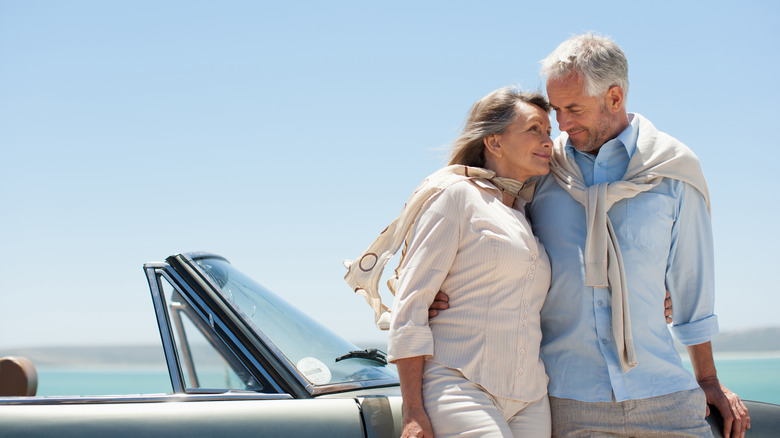
Sam Edwards/Getty Images
When preparing for a road trip, you’ll also want to double-think the idea of wearing any bulky clothing. Thick coats, heavy sweaters, and oversized jackets don’t just take up precious space — they also impact your ability to comfortably settle in and regulate your body temperature.
We’ve all been there before: hopping into the overheated ambiance of a subway station while wearing a coat that instantly makes you feel like you’ve been thrown into an oven. Now picture that but in a much smaller space — your car — and the sweat drops will start forming on their own. And don’t even think about peeling it off — you’ll probably end up elbowing the driver or getting stuck mid-sleeve.
A better approach to planning your road trip outfit is to dress in lighter layers. Think flannels or cardigans — both of which can be easily added or removed as needed — and a tank top or light t-shirt as a base layer. These options offer both flexibility and comfort, and they’ll allow you to enjoy the journey without the bulk.
Too many accessories
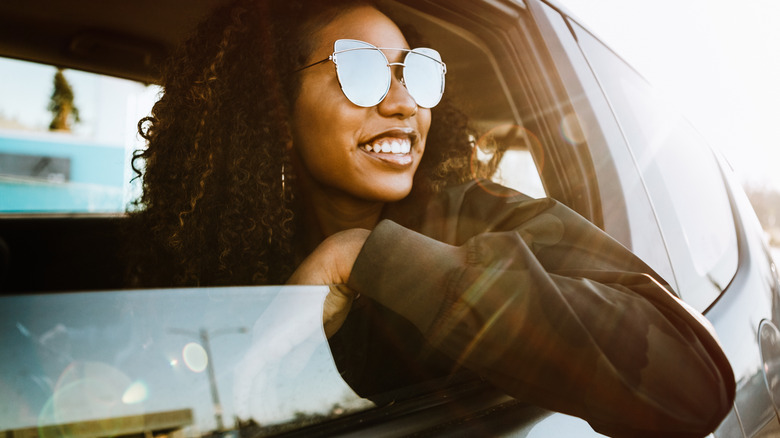
Ryanjlane/Getty Images
Excessive jewelry, large hats, and even scarves can easily get caught in seat belts or tangled up during the journey. Not only is this incredibly uncomfortable — think back to the tangled coat — but it can also be unsafe, especially if you’re driving.
Instead of draping yourself up in necklaces and scarves, opt for minimal and functional accessories that look good and serve a specific purpose at the same time. For example, sunglasses are a great way to spruce up a “boring” road trip outfit and protect your eyes from the sun’s harmful UVA rays that can still penetrate through glass. In addition to this, a small crossbody bag that’s easy to reach for when you make a much-needed snack stop means you’ll have all your essentials handy in a pinch.
Remember, on a road trip, less is often more. Keeping things simple, practical, and organized can go a long way in ensuring you have a great journey.

